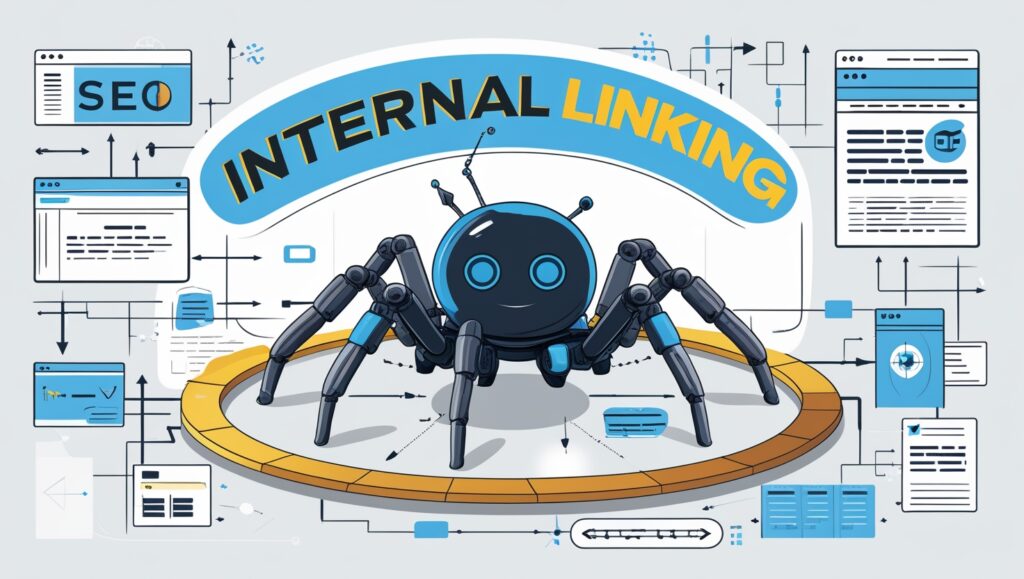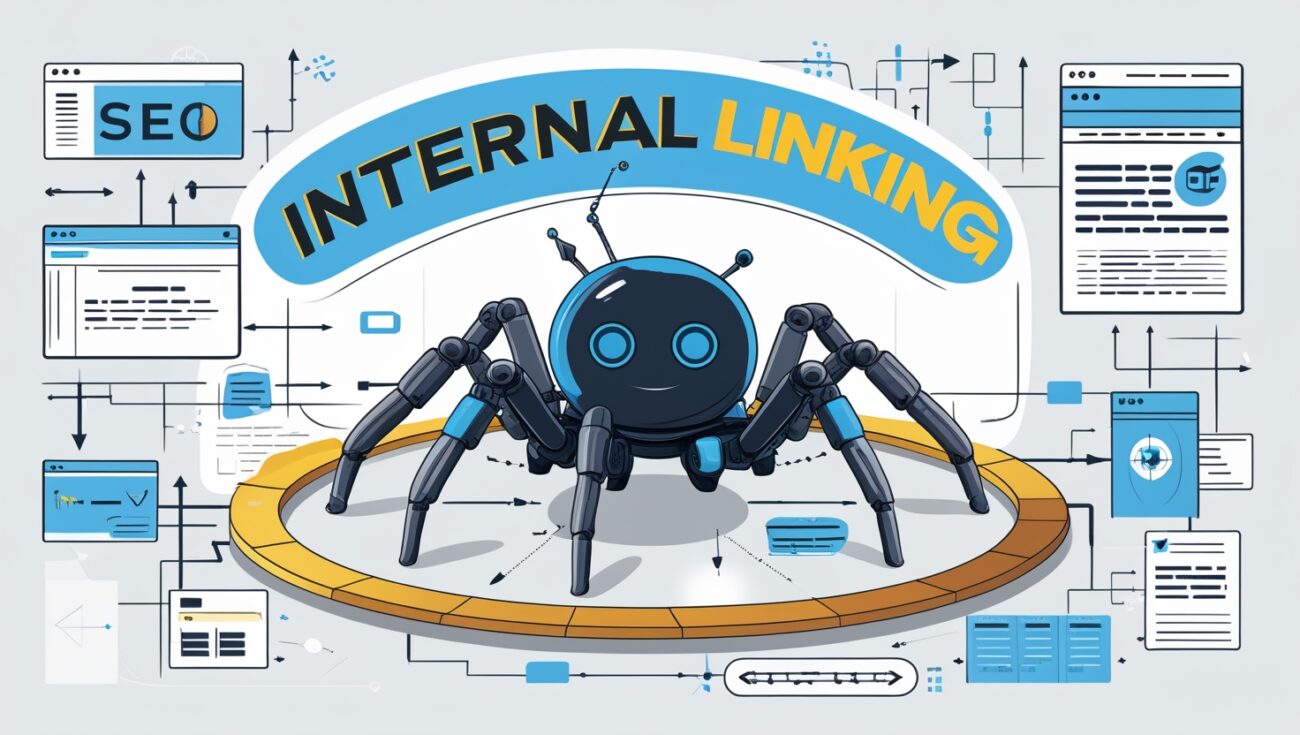The Science of Internal Linking: How Google Crawls Your Website
For years, I treated internal linking as an art form. I would just add a few links where they seemed to fit, hoping they would help with SEO. It wasn’t until I started to dig into the underlying science—how Google’s crawlers actually work—that I realized just how much power I was leaving on the table.

Table of Contents
Understanding the science behind internal linking gives you a powerful advantage. It allows you to build a website that is not only user-friendly but also perfectly optimized for how Google’s bots navigate and evaluate your content. If you’re ready to stop guessing and start building a website that’s scientifically structured to rank, this guide is for you.
The Core Mission: Crawling & Indexing
Google’s primary mission is to crawl the web, find pages, and add them to its index. Its search engine bots, or crawlers, discover new content by following links.
- The Goal: A crawler’s job is to follow the links on your pages to discover new content. It’s like a person walking through a house, opening every door they find. If a door is locked (a broken link) or if a room has no doors leading to it (an orphaned page), the person will have a very difficult time finding what’s inside.
- The Importance: If a page on your site cannot be found by a crawler, it cannot be indexed. If it’s not indexed, it cannot rank. A strong internal linking structure is the roadmap that ensures Google’s bots can find every page on your site.
The Flow of Authority (PageRank)
Google’s original algorithm, PageRank, was built on the idea that a link from one page to another is a vote of confidence.
- The Definition: PageRank is an algorithm that measures the authority of a page based on the number and quality of links pointing to it. Every link that points to a page, internal or external, passes a certain amount of authority.
- The “Authority Juice” Analogy: Think of link equity as “authority juice.” When a strong, authoritative page (like your homepage) links to another page, it passes some of its authority to the destination page. A smart internal linking strategy is all about directing that authority juice to your most important pages, raising the overall authority of your entire site.
The Science-Backed Internal Linking Playbook
Action 1: Fix All Dead Ends
The most fundamental scientific principle is that a broken link or an orphaned page stops the flow of authority dead in its tracks. You need to consistently audit your website for these issues and fix them immediately. A tool can find all of your internal linking errors in minutes so you can start fixing them immediately.
Action 2: The Shorter the Path, the Better
From a scientific standpoint, a page that is fewer clicks away from your homepage is considered more important and easier to find by Google’s bots. A page that is more than three clicks away from your homepage is a red flag. You should always aim to have a short, logical website structure.
Action 3: Build a Logical, Thematic Structure
The Pillar & Cluster Model isn’t just a marketing concept; it’s a way to signal your topical expertise to Google’s algorithms. By creating a central pillar page and linking it to and from many supporting articles, you are building a clear, thematic network that Google’s bots can easily understand. This signals that you are a comprehensive expert in your niche, which is a major ranking factor.
The Tool That Automates the Science
Manually managing all of the above on a large website is nearly impossible. How do you find all your orphaned pages? How do you ensure all of your important pages are only a few clicks from your homepage? That’s why I’ve come to rely on internal linking automation. A good tool can take the guesswork out of distributing authority and building a strong, logical website structure. Ready to stop guessing and start building a website that’s scientifically structured to rank? Discover how Linkbot can help you.
Conclusion: Get a Scientific Advantage
A strong internal linking strategy is the foundation of a high-ranking website. By understanding the science behind how Google’s crawlers work, you can build a website that is perfectly optimized for search engines and for users. It’s the one strategy that can give you a scientific advantage over your competition.
My journey taught me that a major mistake is seeing SEO as a mystery. By implementing a smart, corrective approach to my website, I made the mental shift from being a spectator to an active participant in my website’s success. This simple realization took the overwhelm out of SEO and turned it into a series of logical, manageable steps that I could control.
The long-term, compounding effect of fixing these mistakes is what makes it so powerful. Each time you add a thoughtful, relevant link, you are not just performing a task; you are building your website’s authority, one link at a time. These small, consistent improvements add up to a significant competitive advantage over the long term, making your website an increasingly powerful asset.
I can say from personal experience that there is a special kind of satisfaction that comes from seeing a direct correlation between a new link and a ranking boost. It’s the feeling of taking a tangled mess and organizing it into a clean, logical network. The result is a website that just feels better to navigate, for both users and the people managing it.
A clean internal link profile also has a huge impact on your website’s overall trustworthiness and authority. When a user or a search engine bot lands on your page and sees a clear network of interconnected, relevant articles, it signals that you are a serious, comprehensive resource on the topic. This kind of professional organization is exactly what Google looks for.
The most important part of this foundational skill is building a consistent habit of linking. It’s not about a single audit and then forgetting about it. A good website is a living thing, and it needs regular maintenance to ensure your internal links stay clean, which is a key part of long-term SEO success.
I felt like I was finally in the driver’s seat of my SEO. For years, I had relied on external factors, which felt like I was giving up control of my SEO destiny. But by mastering a simple task like building my internal links, I was proactively building my site’s authority from the inside out, on my own terms, which was an empowering and exciting feeling.
By implementing a strategy that serves both SEO and conversions, you are also directly addressing Google’s E-E-A-T framework. You are demonstrating expertise by creating topical clusters, you are showing authority by linking from strong pages, and you are providing a better user experience, which is a key part of what Google looks for in a trustworthy website.
I’ll never forget the first time I applied my new internal link strategy to a page that was struggling to rank, and it shot up in the search results almost overnight. This was my “aha” moment. I realized that a strategic, well-placed link from a high-authority page was far more powerful than I ever thought possible.
One of the greatest benefits I got from using an automated tool to manage my link profile was the “to-do” list it provided. Instead of being overwhelmed by the sheer size of my website, the tool gave me a prioritized, actionable list of fixes to make. It transformed a monumental, frustrating task into a series of manageable steps that I could tackle in just minutes.
It’s crucial to understand the difference between a simple, generic link and one that’s part of a strategic, mapped plan. A simple link is a one-off connection. A link that’s part of a plan is a purposeful part of a larger network, designed to pass authority and guide a user. The latter is far more powerful.
Ultimately, mastering internal linking is a simple but powerful strategy that transforms a website’s foundation. It’s a low-cost, high-impact fix that can instantly improve your site’s health and SEO performance. It’s the kind of foundational SEO work that every website owner should prioritize.
My final piece of advice is to not be intimidated. Don’t worry about the high cost of manual labor; just focus on making your website a better place for your readers. You will be amazed at the progress you make and the results you can achieve.

